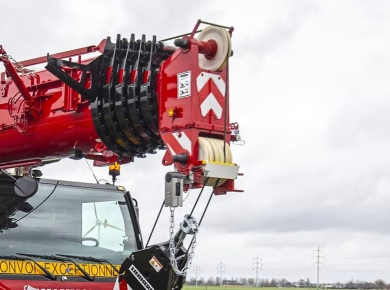When it comes to home maintenance, few decisions are as daunting as determining whether to repair or replace your roof. In Seattle, where the climate can be particularly unforgiving with its rain and occasional storms, this decision can feel even more pressing. A well-maintained roof is crucial for your home’s integrity, but understanding the nuances of repair versus replacement can save you both time and money. Let’s dive into when you should consider repairing versus replacing your roof and some expert insights to guide you through the process.
Understanding the Lifespan of Your Roof
Every roofing material has a different lifespan. Asphalt shingles, which are common in Seattle, usually last around 20 to 30 years. Metal roofs can endure for 50 years or more, while tile roofs have a lifespan that can exceed 100 years if properly maintained. Knowing the age of your roof is the first step in making a sound decision. If your roof is nearing the end of its expected lifespan and you’re experiencing issues, replacement may be the more prudent choice.
Signs You Might Need a Repair
There are several indicators that point towards repair being a viable option. If you notice localized damage, such as a few missing shingles or minor leaks, these issues can often be resolved without the need for a full replacement. Look for these signs:
– **Missing or Damaged Shingles:** If only a few shingles are missing or cracked, and the roof is relatively new, repairs are typically sufficient. However, if there are widespread issues across the roof, it may indicate larger problems that could necessitate replacement.
– **Minor Leaks:** A small leak can often be repaired without significant cost. However, if leaks are frequent and widespread, it may signal that your roof is nearing the end of its life.
– **Damaged Flashing:** The metal flashing around chimneys and vents can sometimes be replaced without needing an entire roof overhaul. If you notice rust or damage here, a simple repair may suffice.
– **Localized Sagging:** If only a small area of your roof appears to sag, repair may be an option. However, if sagging is widespread, it could indicate structural issues.
When Replacement is the Better Option
While repairs can be effective for minor issues, there are certain scenarios where replacement is the wiser choice. If you find yourself in any of these situations, it’s time to consider a new roof.
Extensive Damage or Wear
If your roof has extensive damage—such as widespread missing shingles, significant sagging, or multiple leaks—replacement is likely the best route. A roof that has reached the end of its lifespan will often show signs of wear that can’t be overlooked. This includes curling or buckling shingles, granules collecting in gutters, and water stains on the ceiling or walls of your home.
Energy Efficiency Concerns
Older roofs, particularly those made of less efficient materials, can lead to higher energy bills. If your roof is a few decades old, consider the potential energy savings of a new roof. Modern materials provide better insulation and can significantly reduce heating and cooling costs.
Changing Your Roof’s Style
Sometimes, homeowners want to change the aesthetic of their home. If you’re considering a different roofing material or style, it’s often more cost-effective to replace the entire roof rather than attempting to mix and match with repairs.
Consulting with a Professional
One of the best steps you can take when faced with the repair versus replacement dilemma is to consult with a roofing professional. An expert can assess your roof’s condition and provide insights tailored to your specific situation. They’ll evaluate the damage, consider the age of your roof, and help you weigh the costs versus benefits of each option.
Most professionals will offer a free inspection, which can save you from making an uninformed decision. They can also guide you through the various materials available, helping you choose the best option for Seattle’s climate.
Cost Considerations
Cost is often the deciding factor when it comes to repairs versus replacement. A repair will typically cost less upfront, often ranging from a few hundred to a couple of thousand dollars depending on the extent of the issues. However, if repairs are only delaying the inevitable, you might end up spending more in the long run.
On the other hand, replacing a roof can be a significant investment, usually costing thousands of dollars. Yet, a new roof can increase your home’s value, improve energy efficiency, and give you peace of mind for many years.
Timing Your Decision
When it comes to Seattle, timing can be critical. The rainy season typically runs from late fall to early spring, so if you notice issues with your roof, addressing them before the heavy rains hit is essential. Delaying repairs can result in more significant damage and higher costs down the line.
If you’re considering a roof replacement, spring or summer is often the best time. This allows for optimal weather conditions for installation and can help avoid delays due to rain.
Understanding Your Insurance Coverage
It’s important to review your homeowner’s insurance policy regarding roof damage. Many policies cover repairs or replacement due to weather-related incidents. Understanding your coverage can help ease the financial burden of repairs or replacement.
If you find yourself needing a new roof after a storm, your insurance could cover a significant portion of the cost. Make sure to document any damage thoroughly and consult with your insurance provider to understand your options.
Final Thoughts
Deciding whether to repair or replace your roof in Seattle is not a decision to take lightly. It requires a careful assessment of the current state of your roof, an understanding of the potential costs involved, and a consideration of your long-term plans for your home. By weighing these factors and consulting with a professional, you can make an informed decision that protects your home and your wallet.
Remember, a roof is more than just a protective covering; it’s an integral part of your home’s structure and value. Whether you choose to repair or replace, ensuring that your roof is in good condition will provide peace of mind and maintain the safety of your home for years to come.


